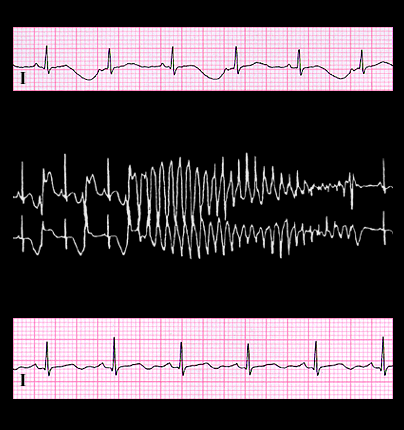
The ECGs shown here are another example of T wave alternans. They are from a 36 year old male with pneumocystis pneumonia who was being treated with pentamidine, a drug known to be associated with QT prolongation and torsade de pointes. The upper strip demonstrates inverted T waves and marked QT prolongation in the alternate beats. The middle stripes are from the dual channel bedside monitor and illustrate the T wave alternans and a brief burst of torsade. The lower strip was recorded one week later, after the pentamidine had been discontinued. Note that the QT prolongation and T wave alternans are no longer present.
